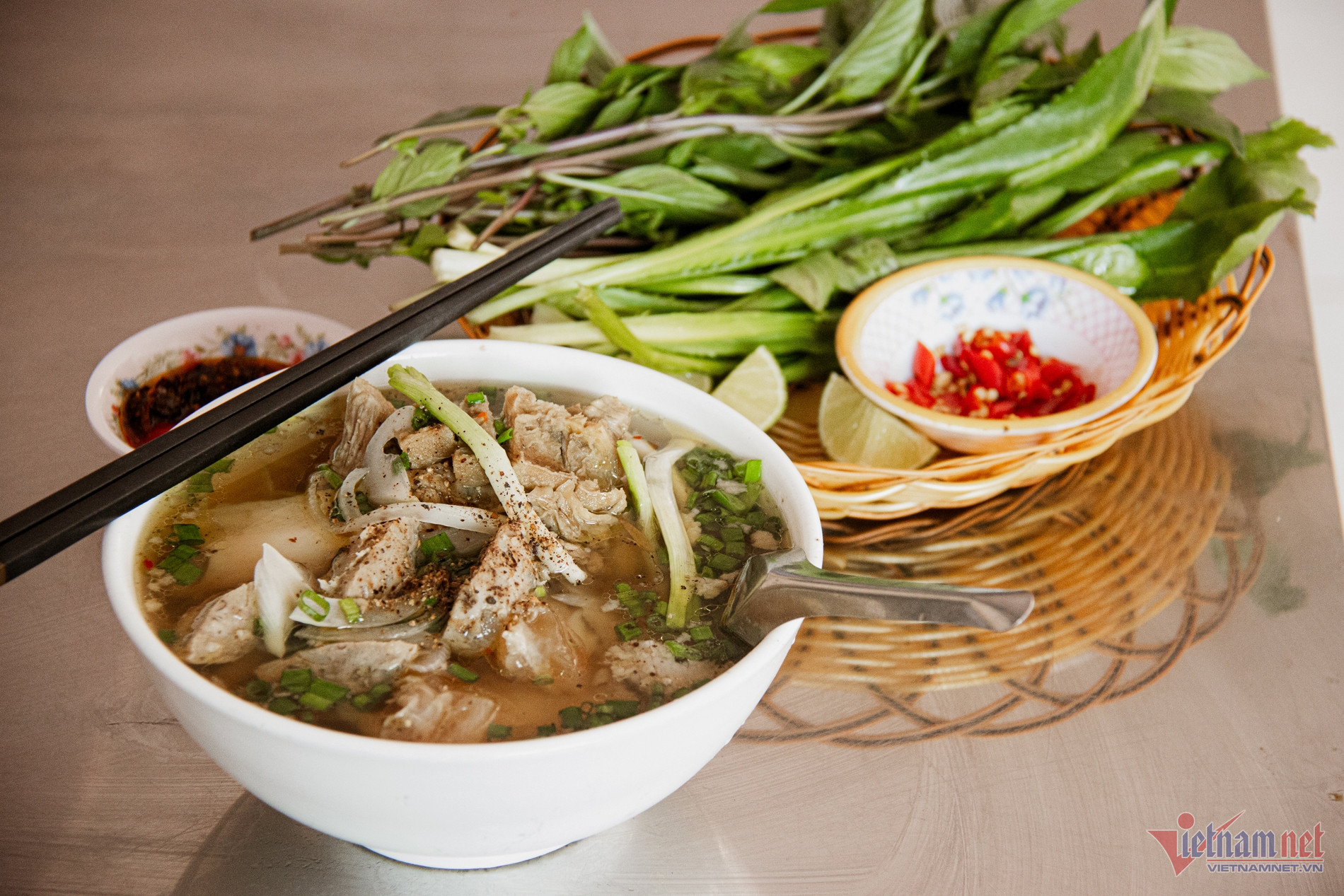
The pho bo (beef noodle soup) processed by Cham ethnic minority people in An Giang is a special version of pho.
Cham people in An Giang only use beef sold by the Cham people. The broth is made by simmering different types of bones, enriched with rock sugar, different spices and herbs.
Ro Fi Ah, born in 1990, a Cham ethic minority woman, the owner of a pho bo restaurant in Chau Doc, said in the locality, Cham Muslims don’t eat pork, but eat buffalo and beef, and have to fast during the Ramadan month.
The local culinary culture is influenced by religion and beliefs, and the dish has to observe the rules of the religion.
The woman said the secret she uses to make delicious pho is beef from grass-fed cows, or free-range cows. As the cows are gazed naturally, their meat is firm with a natural fragrance.
“Cham people only buy beef slaughtered and sold by Cham people,” she said.
“Some sellers may inject water into beef to make it heavier, which affects meat quality and causes loss during the processing (only 45 percent of meat is retained after boiling one kilogram of fresh beef). Therefore, I just buy free-range cows near my house and process beef myself,” she explained.
The 34-year-old woman revealed that to get a rich, naturally sweet broth, she has to simmer bones of different kinds for about 15 hours. The long simmering allows the nutrients from the bones to seep into the broth.
She also uses other ingredients and spices such as onions, scallions and roasted garlic, ginger, galangal, root of coriander plant, sugarcane and cardamom. All the spices are fried with small fire to release the characteristic aroma.
The broth is also seasoned with a little salt and rock sugar in the right amounts to the taste of the Cham people.
According to Ro Fi Ah, Cham pho can be varied with slightly different ingredients and recipes to serve the diverse taste of diners.
She uses brisket, beef chuck and front thigh. The boiling time for the beef differs and chefs boil the meat until it is done to a turn.
To make pho with eye-round steak, she uses filet or hind thigh to be sure that the meat is soft, fragrant, and easy to eat.
“Most of the dishes of Cham people in An Giang in general and beef noodle soup in particular are created based on the harmonious combination of locally available ingredients such as beef, rock sugar and familiar spices (onion, pepper, garlic, chili, lemongrass),” she said.
Thai Lam, a diner from Chau Doc, said he likes the pho offered by Ro Fi Ah because of the impressive flavor. The dish he prefers is the special pho, served with different types of meat, priced at VND50,000 per bowl.
The typical characteristic of Cham people’s pho is a big serving, full topping, and sweet broth with fragrance from rock sugar and herbs.
Unlike most other pho restaurants in Hanoi which serve pho with pure broth, the broth offered by a Michelin-suggested pho restaurant on Au Trieu street in Hanoi is fatty, cloudy and rich, made by simmering cow bones for 24 hours.
The restaurant was the choice of a Filipino couple, Ralph, a photographer, and Sam, the owner of a fashion shop from Manila, during his visit to Vietnam recently.
The couple from the Philippines ordered two servings of pho with eye-round steak and a serving of fried dough sticks, totaling VND140,000.
Sam said the pho was eye catching. The rare meat was uniquely prepared by roughly mincing, spreading thinly and placing it on top of the soft noodles. The preparation finishes when the chef pours boiling broth into a bowl of ingredients.
The woman was surprised because the beef was very tender, and the pieces were large but thinly sliced. The pho noodles were smooth, and the broth was rich and fatty. As for Ralph, he kept exclaiming "looks great, so delicious”.
According to Ngo Thi Phi Nga, 65, the owner of the pho restaurant, she doesn’t use cinnamon or star anise like other restaurants, but uses good fish sauce and grilled ginger.
Thao Trinh